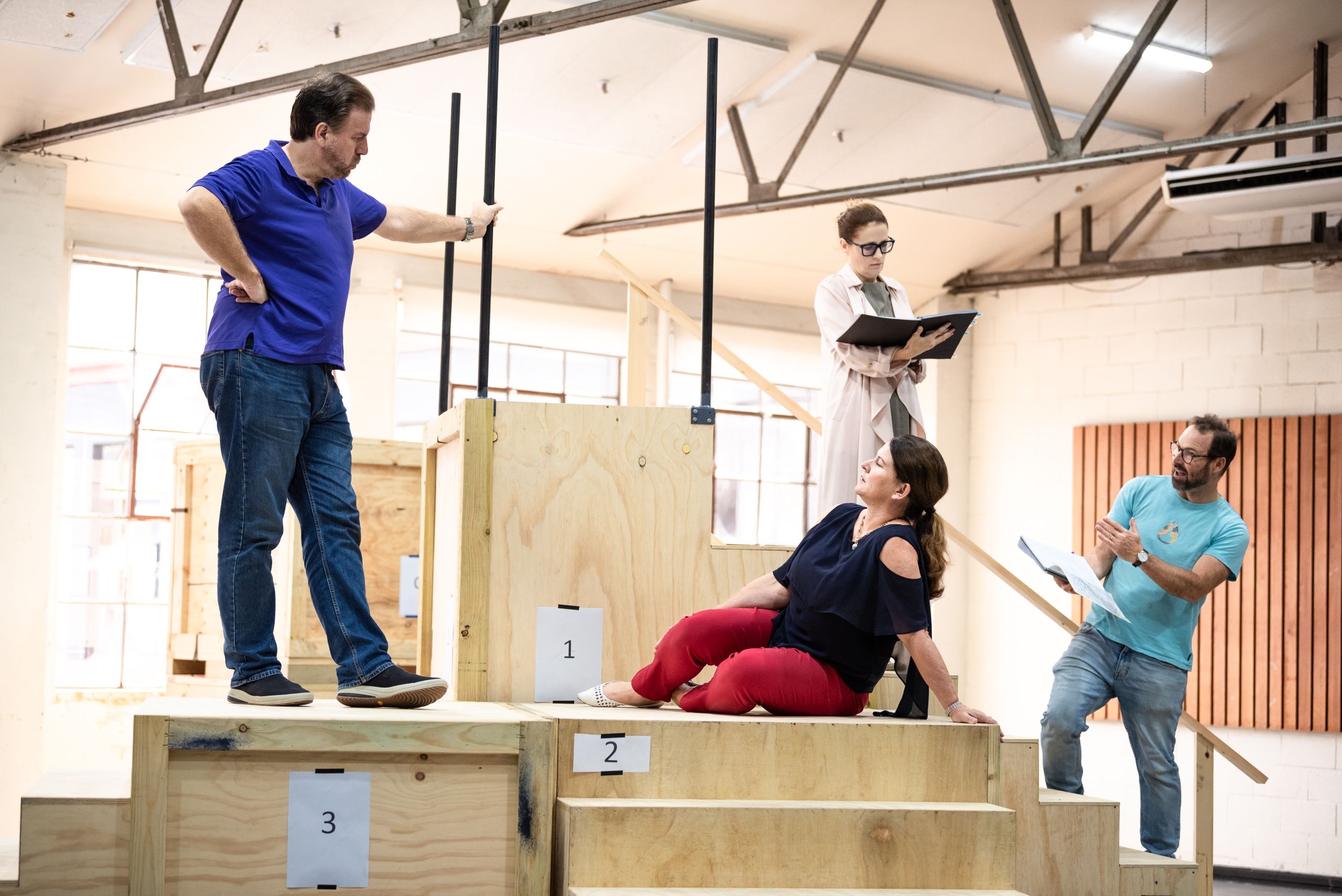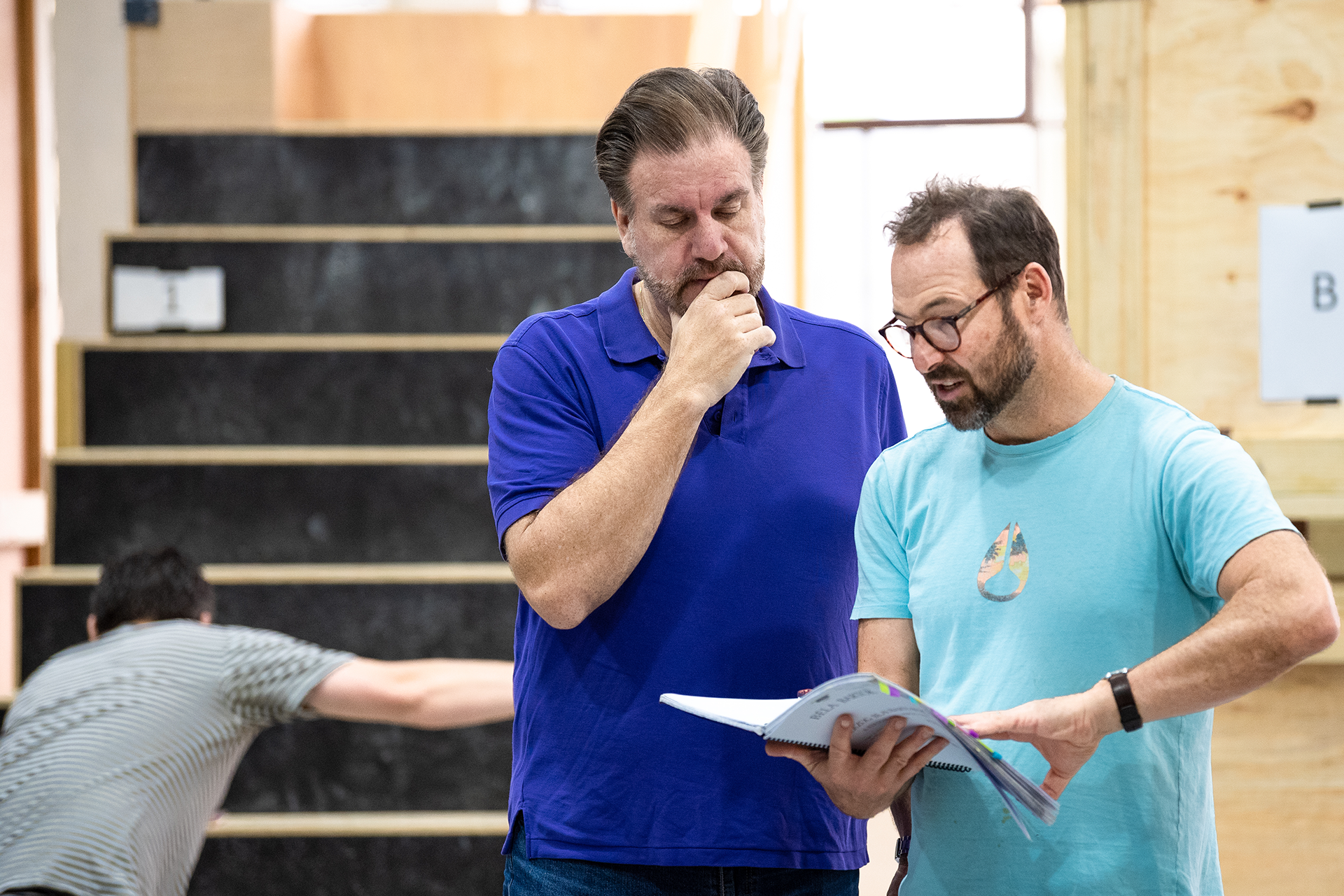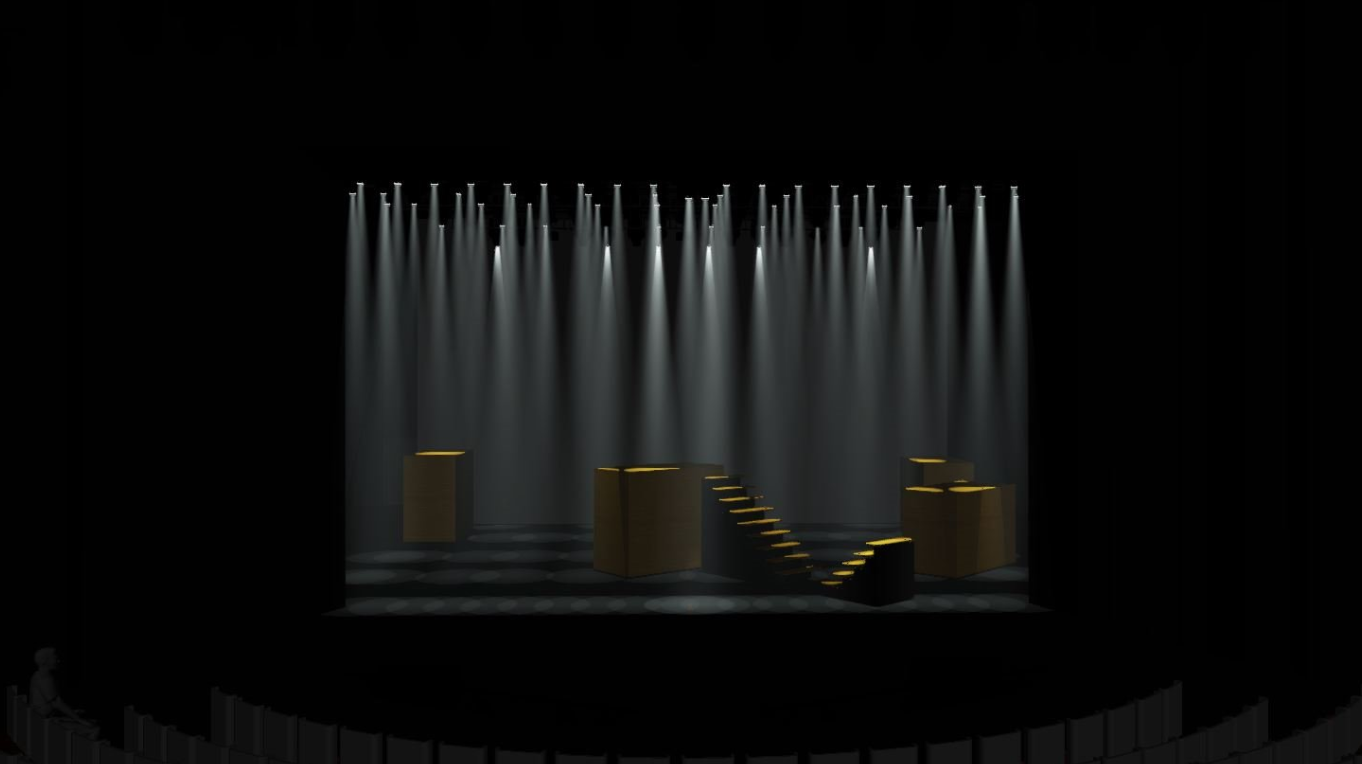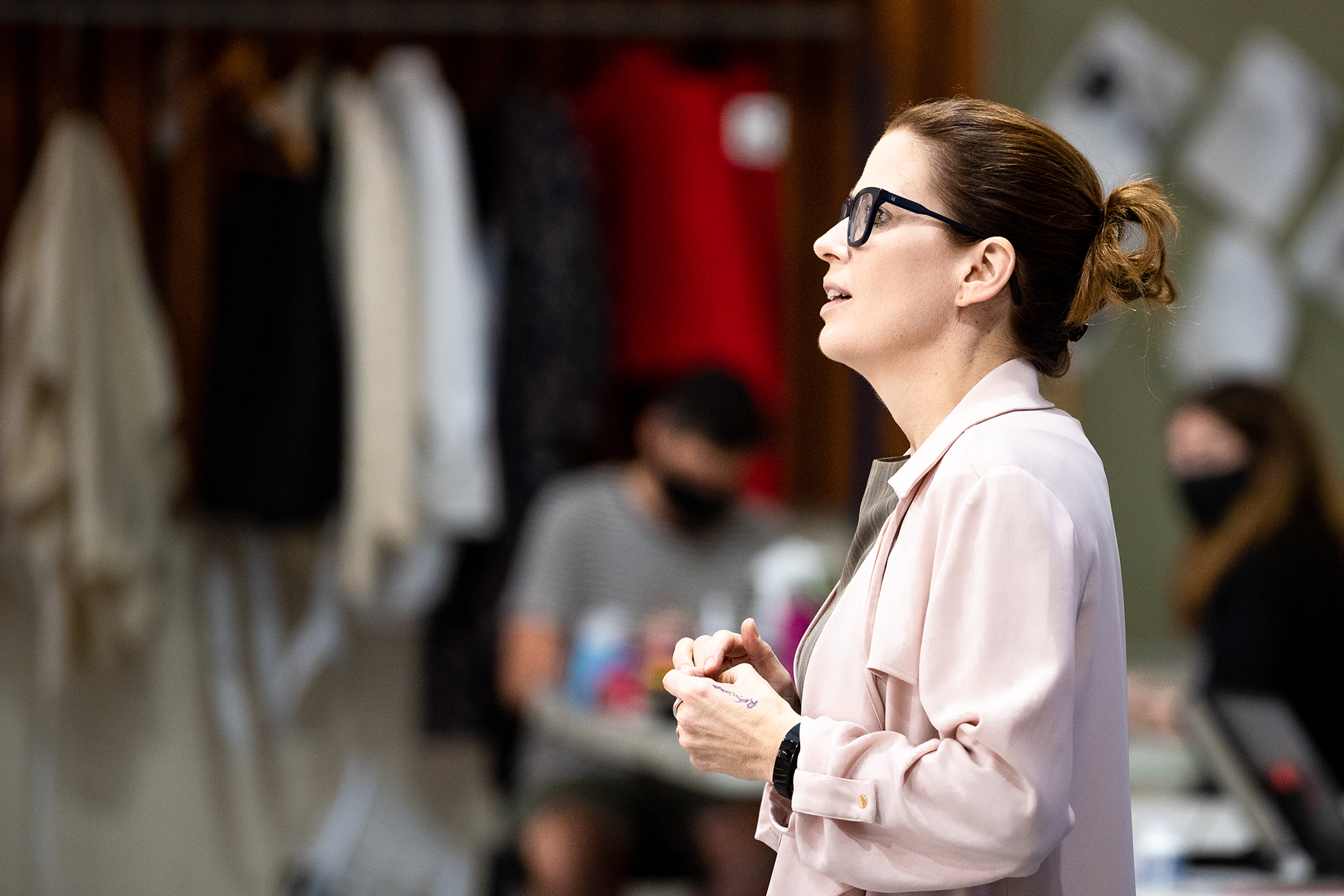Building Bluebeard's Castle
Directors Andy Morton and Priscilla Jackman tackle Bartók's masterpiece and find new meaning for the 21st century.

It’s not often that two directors work side-by-side to bring an opera to the stage. Usually one director’s vision reigns supreme, but for Andy Morton the idea of embarking on a production of Béla Bartók’s Bluebeard’s Castle alone was unthinkable.
Morton, who has worked with Opera Australia since 2013, decided this story of a powerful, menacing man and the young woman who falls dangerously for him, was too prickly and politically fraught to tackle without a woman by his side. At every turn, Bluebeard’s Castle is a story about power, sex and violence, and in many ways it reflects attitudes to gender from the early 20th century, when the opera was written.
“I need my perspectives challenged to direct this opera,” Morton says. “I’m a white, middle-aged straight man from England, privately educated. And like everyone, I have unconscious biases.”
“Bluebeard is a charismatic, wealthy, powerful psychopath in the mould of a man who has always got what he wants...”
Enter Morton’s associate, Priscilla Jackman, a theatre and opera director with credits at Opera Australia, Sydney Theatre Company and Ensemble Theatre. While Jackman says she was honoured to be invited on board to support as associate, Morton insists the two directors are two arms of the same creature.
“We fundamentally agree with where this piece needs to go, and how it needs to get there,” Morton says.
Jackman agrees: “We have a really productive working dynamic. It’s not been without conflict at times, but it’s always been resolved. It’s been quite thrilling to have that partnership and have a sidekick to bash things through with.
“The first thing we decided — and Andy was very clear on this before I even joined — was that we weren’t going to look at a traditional rendering of the story. It had to exist in a post-#MeToo world.”
Bartók’s opera is based on an old French folktale about a rich nobleman who has been married to multiple women who have mysteriously disappeared. In Bartók’s version, we meet Bluebeard when a young woman called Judith, having just left her family and fiancee, comes to live in his castle. Everything she sees in the castle is dark and covered with blood, but she wants to fling open all the doors and light the castle’s darkest corners. Judith knows there’s danger lurking behind each door, but she finds herself at the centre of a disturbing situation she never could have imagined.
“Bluebeard is a charismatic, wealthy, powerful psychopath in the mould of a man who has always got what he wants and sees no wrong in getting what he wants,” Morton says. “He has no empathy whatsoever.”
It didn’t take long for Morton and Jackman to begin noticing parallels between the figure of Bluebeard and some of the powerful men whose sex crimes have been publicly exposed in recent years, including Harvey Weinstein and Jeffrey Epstein. Those men don’t serve as direct references in the staging, but their stories — and the stories of the women who were both their victims and enablers — opened up all sorts of intriguing territory for Morton and Jackman.
“He’s a duke in the original tale, so we’ve found him in other contemporary figures,” Jackman says. “She’s a woman of today as well, who has chosen something a little more complicated than what her options originally were. She knows all isn’t right. So she’s willingly entering into something.”


Lighting design render by John Rayment.
Lighting design render by John Rayment.

Lighting design render by John Rayment.
Lighting design render by John Rayment.
Bartók’s piece is an early work of expressionism, inviting directors to come up with inventive staging, responding to the opera’s themes. Its challenges have led to the opera being labelled “unstageable” and frequently being performed as a concert rather than a fully-staged piece.
Morton and Jackman are putting lighting at the centre of their staging, using spectacular and surprising effects designed by lighting veteran John Rayment.
“The role of lighting was always very strong for Bartók,” Morton says. “He makes very specific stage directions: this colour light will come in at this moment. Of course a lot of the psychological side of the opera is about throwing light on the dark recesses of the male psyche.”
“...we weren’t going to look at a traditional rendering of the story. It had to exist in a post-#MeToo world.”
“We’re sculpting space with the light,” Jackman adds. “Obviously it illuminates the figures in space, but it also points to everything about their relationship, how they interact with each other and their power dynamic.”
The lighting will also reflect the dynamics of the score, which has frequently been called a masterpiece. Conducted by Andrea Molino, the music will be enormously powerful and also frequently menacing.
“It’s sexual violence, really, in the music,” Jackman says. “You can’t shy away from that and pretend that it’s something it’s not. But we can use that as a turning point and make Judith a lightning rod for change.”
Morton and Jackman have spent a lot of time nutting out their staging of the opera’s dark final moments to ensure audiences are left with an image suggesting the possibility of positive change. In a time when there’s a groundswell of women using their voices to dismantle the structures that allow predatory behaviour to flourish — this year’s Australian of the Year, Grace Tame, is a recent local example — both directors agreed it was essential to find a more contemporary ending that fits within Bartók’s score.
“It’s very hard with other operas from the canon to change the endings without it becoming contrived, because the composer’s will just isn’t there,” Morton says. “You can have Carmen killing Don José at the end, and that’s been done. But it doesn’t really work because you haven’t got the space for that in the music. Our ending isn’t contrived. It’s all there in the music.”
Perhaps more than any other opera, Bluebeard’s Castle demands that its director/s consider how the audience might sit in relation to the action on stage: a spoken prologue at the beginning explains this story is fundamentally a mirror in which the audience may see themselves.
“As soon as you liberate it from its past and look at it as a living, breathing story to tell in today’s world, to today’s audiences, then you start to meet all its challenges,” Jackman says.
“I’ve never done an opera that has been so resonant to where we are societally,” Morton says. “We have a well-documented issue with domestic violence, worldwide and specifically in Australia, which is to our shame. And here’s an opera that allows us to shine a light on that.”

